Flags of Our Fathers (film)
8 /10 1 Votes
73% Rotten Tomatoes 79% Metacritic Genre Drama, History, War Country United States | 7.1/10 IMDb 4/4 Roger Ebert Duration Language English | |||||||||||||||||||||||||||||||||
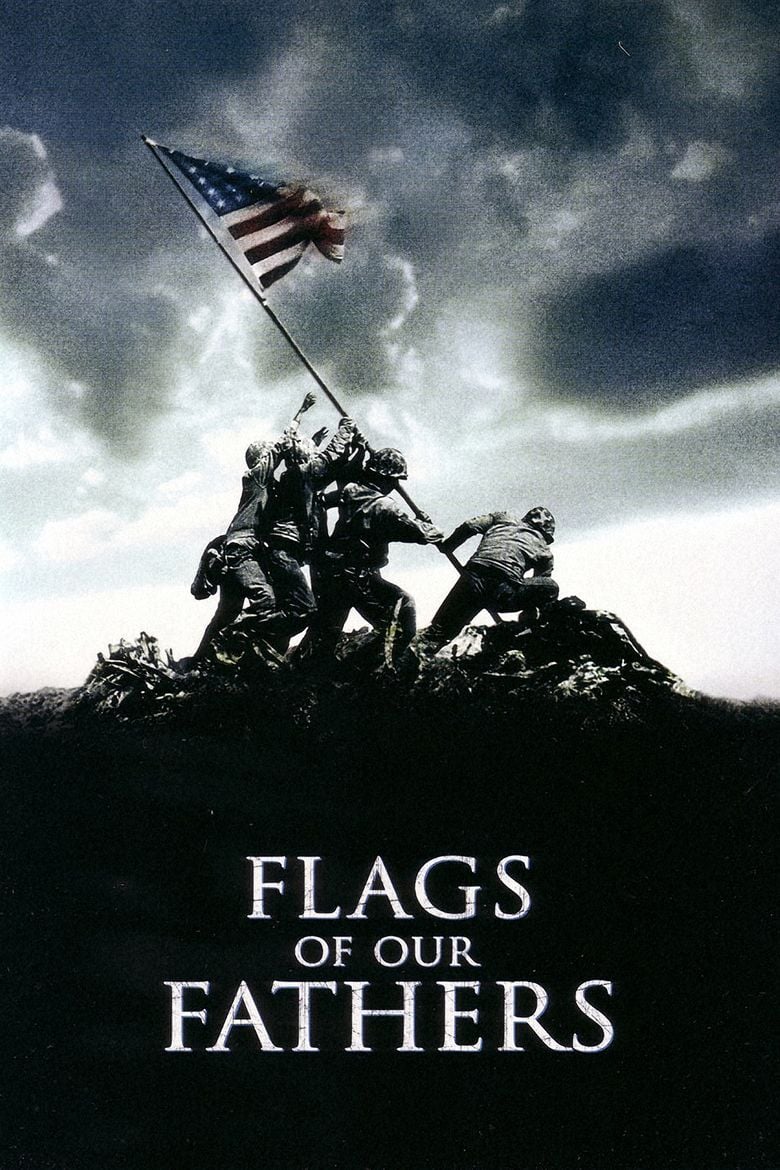 | ||||||||||||||||||||||||||||||||||
Release date October 20, 2006 (2006-10-20) Based on Novel:James BradleyRon Powers Writer Awards Japan Academy Prize for Outstanding Foreign Language Film Cast (John 'Doc' Bradley), (Corporal Ira Hayes), (Corporal Rene Gagnon), (Sergeant Keyes Beech), (Bud Gerber), (Sergeant Mike Strank) Similar movies The Thin Red Line , Saving Private Ryan , Flying Leathernecks , Wake Island , When Trumpets Fade , The Book Thief Tagline They fight for their country but they die for their friends. | ||||||||||||||||||||||||||||||||||
Flags of our fathers official trailer hd
Flags of Our Fathers is a 2006 American war film directed, co-produced, and scored by Clint Eastwood and written by William Broyles, Jr. and Paul Haggis. It is based on the book of the same name written by James Bradley and Ron Powers about the 1945 Battle of Iwo Jima, the five Marines and one Navy Corpsman who were involved in raising the flag on Iwo Jima, and the aftereffects of that event on their lives.
Contents
- Flags of our fathers official trailer hd
- Flags of our fathers 2006 trailer
- Plot
- Production
- Critical reception
- Box office
- Spike Lee controversy
- Home media
- References
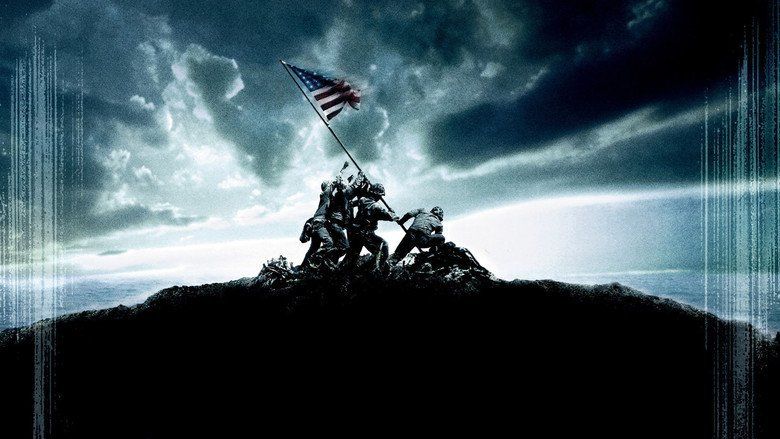
Until June 23, 2016, Bradley's father John Bradley, navy corpsman, was both misidentified as being one of the figures who raised the second flag, and incorrectly depicted on the memorial as the third bronze statue from the base of the flagstaff with the 32-foot (9.8 M) bronze statues of the other five flag-raisers on the monument.
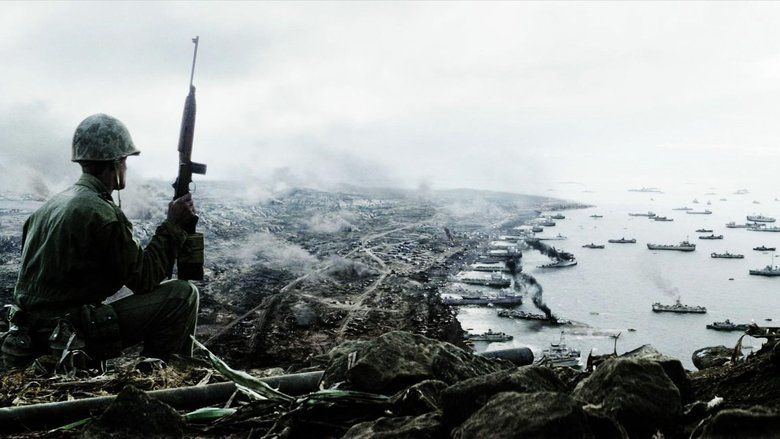
The film is taken from the American viewpoint of the Battle for Iwo Jima, while its companion film, Letters from Iwo Jima, which Eastwood also directed, is from the Japanese viewpoint of the battle. Letters from Iwo Jima was released in Japan on December 9, 2006, and in the United States on December 20, 2006, two months after the release of Flags of Our Fathers on October 20, 2006.

Flags of our fathers 2006 trailer
Plot

As three US servicemen – Marine Private First Class Ira Hayes, Private First Class Rene Gagnon, and Navy Corpsman John "Doc" Bradley – are feted as heroes in a war bond drive, they reflect on their experiences via flashback.
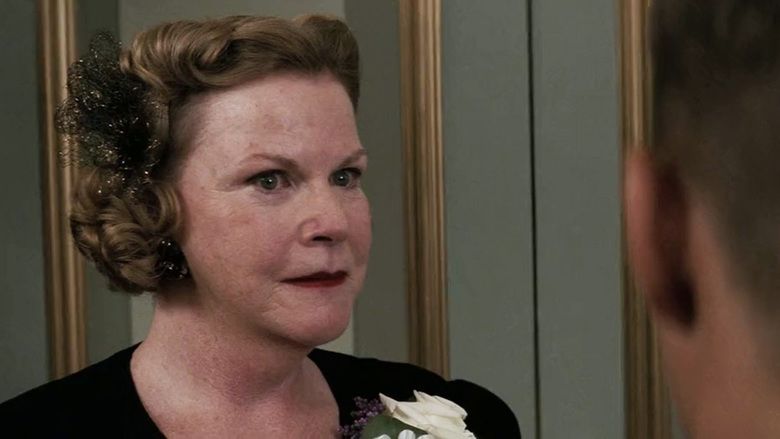
After training at Camp Tarawa in Hawaii, the 28th Marine Regiment 5th Marine Division sails to invade Iwo Jima. The Navy bombards suspected Japanese positions for three days. Sergeant Mike Strank is put in charge of Second Platoon.

The next day, February 19, 1945, the Marines land in Higgins boats. The beaches are silent and Private First Class Ralph "Iggy" Ignatowski wonders if the defenders are all dead before Japanese heavy artillery and machine guns open fire on the advancing Marines and the Navy ships. Casualties are heavy but the beaches are secured.
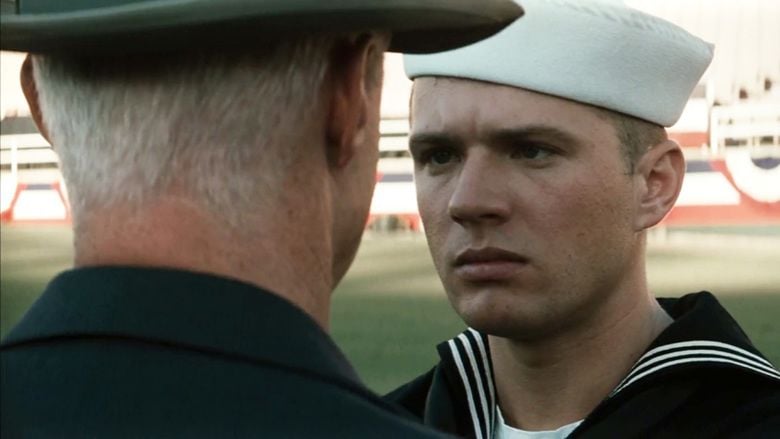
Two days later the Marines attack Mount Suribachi under a rain of Japanese artillery and machine gun fire, as the Navy bombards the mountain. Doc saves the lives of several Marines under fire, which later earns him the Navy Cross. The mountain is eventually secured.
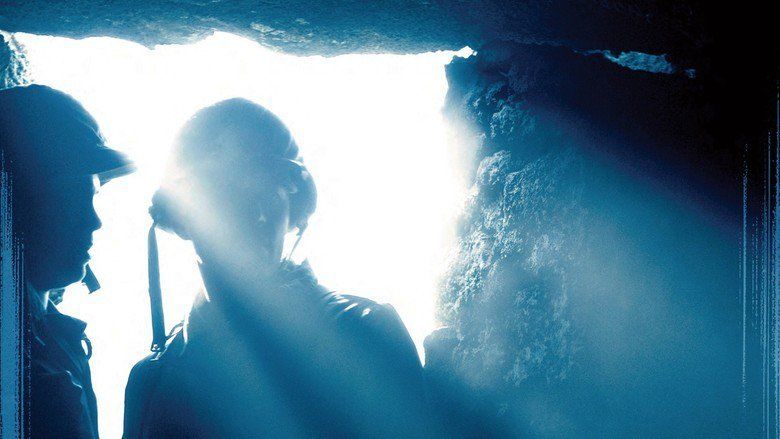
On February 23, the platoon under command of Sergeant Hank Hansen reach the top of Mount Suribachi and hoist the United States flag to cheers from the beaches and the ships. Secretary of the Navy James Forrestal, who witnesses the flag raising as he lands on the beach, requests the flag for himself. Colonel Chandler Johnson decides his 2nd Battalion deserves the flag more. Rene is sent up with Second Platoon to replace the first flag with a second one for Forrestal to take. Mike, Doc, Ira, Rene and two other marines (Corporal Harlon Block and Private First Class Franklin Sousley) are photographed by Joe Rosenthal as they raise the second flag.
On March 1, Second Platoon are ambushed from a Japanese machine gun nest. During the fight over the nest Mike is hit by a U.S. Navy shell and dies from his wounds. Later that day Hank is shot in the chest and dies, and Harlon is killed by machine gun fire.
Two nights later, while Doc is helping a wounded Marine, Iggy is abducted by Japanese troops and dragged into a tunnel. Doc finds his viciously mangled body a few days later. On March 21 Franklin is killed by machine gun fire and dies in Ira's arms. Of the eight men in the squad only three are left: Doc, Ira and Rene. A few days after Franklin's death, Doc is wounded by artillery fire while trying to save a fellow corpsman. He survives and is sent back home. On March 26, the battle ends and the U.S. Marines are victorious.
After the battle, the press gets hold of Rosenthal's photograph. It is a huge morale booster and becomes famous. Rene is asked to name the six men in the photo: he identifies himself, Mike, Doc and Franklin, but misidentifies Harlon as Hank. Rene eventually names Ira as the sixth man, even after Ira threatens to kill him for doing so.
Doc, Ira and Rene are sent home as part of the seventh bond tour. When they arrive to a hero's welcome in Washington, Doc notices that Hank's mother is on the list of mothers of the dead flag raisers. Ira angrily denounces the bond drive as a farce. The men are reprimanded by Bud Gerber of the Treasury Department, who tells them that the country cannot afford the war and if the bond drive fails the U.S. will abandon the Pacific and their sacrifices will be for nothing. The three agree not to tell anyone that Hank was not in the photograph.
As the three are sent around the country to raise money and make speeches, Ira is guilt-ridden, faces discrimination as a Native American, and descends into alcoholism. After he throws up one night in front of General Alexander Vandegrift, commandant of the Marine Corps, he is sent back to his unit and the bond drive continues without him.
After the war, the three survivors return to their homes. Ira still struggles with alcoholism and is never able to escape his unwanted fame. One day after being released from jail, he hitchhikes over 1,300 miles to Texas to see Harlon Block's family. He tells Harlon's father that his son was indeed at the base of the flag in the photograph. In 1954, the USMC War Memorial is dedicated and the three flag raisers see each other one last time. In 1955 Ira dies of exposure after a night of drinking. That same year Doc drives to the town where Iggy's mother lives to tell her how Iggy died, though it is implied that he does not tell her the truth. Rene attempts a business career but finds that the opportunities and offers he received during the bond drive are rescinded. He spends the rest of his life as a janitor. Doc, by contrast, is successful, buying a funeral home. In 1994, on his deathbed, he tells his story to his son, James, and in a final flashback to 1945, the men swim in the ocean after raising the flags.
Production
The film rights to the book were purchased by DreamWorks in June 2000. Producer Steven Spielberg brought William Broyles to write the first drafts of the script, before director Clint Eastwood brought Paul Haggis to rewrite. Eastwood was by the book's story of an "exploitation of making celebrities of people who didn’t feel they deserved to be celebrities." In the process of reading about the Japanese perspective of the war, in particular General Tadamichi Kuribayashi, Eastwood decided to film a companion piece with Letters from Iwo Jima, which was shot entirely in Japanese. Bradley Cooper auditioned for one of the leading roles. Flags of Our Fathers was shot in the course of 58 days. Jared Leto was originally cast as Rene Gagnon but had to back out due to a tour commitment with his band, Thirty Seconds to Mars.
Flags of Our Fathers cost $55 million although it was originally budgeted at $80 million. Variety subsequently downgraded the price-tag to $55 million. Although the film is taken from the American viewpoint of the battle, it was filmed almost entirely in Iceland and Southern California, with a few scenes shot in Chicago. Shooting ended early 2006, before production for Letters from Iwo Jima began in March 2006.
Critical reception
The film received positive reviews with the review tallying website Rotten Tomatoes reporting that 138 out of the 189 reviews they tallied were positive for a score of 73% and a certification of "fresh." On Metacritic, the film scored a 79 out of 100 based on 39 reviews, indicating "Generally favorable reviews."
The film made the top ten list of the National Board of Review. Eastwood also earned a Golden Globe nomination for directing. The film was nominated for two Academy Awards — for Best Sound (John T. Reitz, David E. Campbell, Gregg Rudloff and Walt Martin) and Sound Editing. Film critic Richard Roeper said, "Clint Eastwood's Flags of Our Fathers stands with the Oscar-winning Unforgiven and Million Dollar Baby as an American masterpiece. It is a searing and powerful work from a seventy-six-year-old artist who remains at the top of his game... [and] Flags of Our Fathers is a patriotic film in that it honors those who fought in the Pacific, but it is also patriotic because it questions the official version of the truth, and reminds us that superheroes exist only in comic books and cartoon movies."
Box office
Despite critical acclaim, the film under-performed at the box office, earning just $65,900,249 worldwide on an estimated $90 million production budget. It took $2.7 million less than its companion film Letters From Iwo Jima, which had a budget of $71 million less (its total budget being $19 million).
Spike Lee controversy
At the 2008 Cannes Film Festival, director Spike Lee, who was making Miracle at St. Anna, about an all-black U.S. division fighting in Italy during World War II, criticized director Clint Eastwood for not depicting black Marines in Flags of Our Fathers. Citing historical accuracy, Eastwood responded that his film was specifically about the Marines who raised the flag on Mount Suribachi at Iwo Jima, pointing out that while black Marines did fight at Iwo Jima, the U.S. military was segregated during World War II, and none of the men who raised the flag were black. Eastwood believed Lee was using the comments to promote Miracle at St. Anna and angrily said that Lee should "shut his face". Lee responded that Eastwood was acting like an "angry old man", and argued that despite making two Iwo Jima films back to back, Letters from Iwo Jima and Flags of Our Fathers, "there was not one black Marine in both of those films".
Contrary to Lee's claims, however, black Marines (including an all-black unit) are seen in scenes during which the mission is outlined, as well as during the initial landings, when a wounded black Marine is carried away. During the end credits, historical photographs taken during the Battle of Iwo Jima show black Marines. Although black Marines fought in the battle, they were restricted to auxiliary roles, such as ammunition supply, and were not involved in the battle's major assaults; they did, however, take part in defensive actions. According to Alexander M. Bielakowski and Raffaele Ruggeri, "Half a million African Americans served overseas during World War II, almost all in segregated second-line units." The number of African Americans killed in action was 708.
Spielberg later intervened between the two directors, after which Lee even sent a copy of a film he was working on to Eastwood for a private screening as a seeming token of apology.
Home media
The DVD was released in the United States by DreamWorks Home Entertainment and internationally by Warner Home Video on February 6, 2007. It is devoid of any special features.
A two-disc Special Collector's Edition DVD (with special features) was released on May 22, 2007. It was also released on HD DVD and Blu-ray formats.
The Two-Disc Special Collector's Edition DVD is also available in a five-disc commemorative set that also includes the Two-Disc Special Collector's Edition of Letters from Iwo Jima and a bonus fifth disc containing History Channel's Heroes of Iwo Jima documentary and To the Shores of Iwo Jima, a documentary produced by the United States Navy and the United States Marine Corps, released by Warner Home Video.
References
Flags of Our Fathers (film) WikipediaFlags of Our Fathers (film) IMDbFlags of Our Fathers (film) Rotten TomatoesFlags of Our Fathers (film) Roger EbertFlags of Our Fathers (film) MetacriticFlags of Our Fathers (film) themoviedb.org
